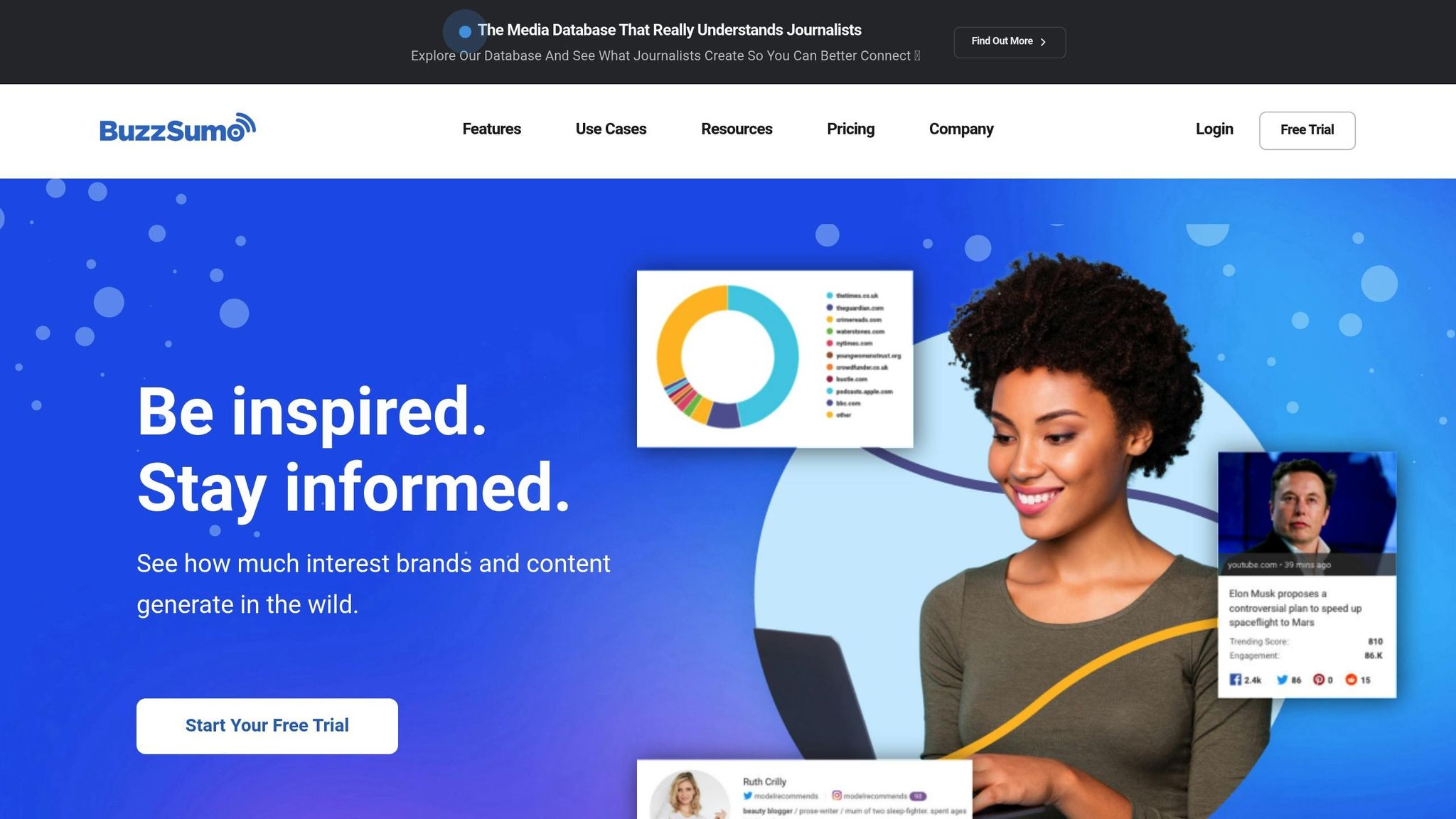Competitor content analysis helps you improve your SEO strategy by studying what works for others in your industry. Here’s a quick summary of how to do it:
- Identify Competitors: Focus on primary (direct rivals) and secondary (indirect rivals) competitors.
- Analyze Content:
- Review formats like blogs, guides, videos, and infographics.
- Check headlines, structure, visuals, and calls-to-action.
- Spot gaps in topics, keywords, and depth.
- Study SEO:
- Research keywords, backlinks, and technical SEO (site speed, mobile readiness).
- Evaluate content structure and internal linking.
- Use Tools:
- Apply Findings:
- Update your content to fill gaps and improve quality.
- Optimize SEO with better keywords, meta descriptions, and technical fixes.
- Plan a content schedule based on competitor trends and audience needs.
Quick Tip: Start with tools like SEMrush or Ahrefs to identify keyword gaps and improve your strategy.
| Tool | Key Features | Best For |
|---|---|---|
| SEMrush | Keyword tracking, content audits | Monitoring competitors’ SEO strategies |
| Ahrefs | Backlink analysis, content explorer | Finding content gaps and top-performing pages |
| BuzzSumo | Social engagement, trending topics | Understanding audience preferences |
| SearchX | Real-time SEO insights | Identifying content gaps and improving conversions |
This guide will help you refine your content and SEO strategies to stand out in your industry.
How to Conduct SEO Competitor Analysis: Template for …
Finding the Right Competitors
It’s important to identify the competitors that are worth analyzing.
Main vs. Secondary Competitors
Understanding the difference between primary and secondary competitors can help focus your efforts:
Primary Competitors
These are your direct rivals. They:
- Target the same audience with similar products or services
- Compete for identical keywords and search intent
- Operate at a comparable market level
- Share similar business goals
Secondary Competitors
These are indirect rivals. They:
- Overlap with your audience in some areas
- Create content on related topics
- May not offer the same products or services
- Compete for similar search rankings
Competitor Research Tools
The right tools can provide detailed insights into your competitors. Here’s what to track:
| Tool Purpose | Key Metrics to Track |
|---|---|
| Keyword Analysis | Search volume, ranking difficulty, SERP features |
| Content Performance | Engagement rates, social shares, backlinks |
| Market Position | Domain authority, organic traffic, keyword overlap |
| Technical SEO | Site speed, mobile optimization, content structure |
These metrics will help you select the most relevant competitors for your analysis.
How to Pick Competitors
Choose competitors whose strategies can provide actionable insights to improve your own content.
- Market Position Alignment
Focus on competitors targeting the same market segment. Look for those with:- Similar audience demographics
- Comparable content quality
- A business scale and resources similar to yours
- Content Performance Metrics
Select competitors with strong content performance, such as:- High organic search visibility
- A solid backlink profile
- Consistent publishing schedules
- Active and engaged social media audiences
- Search Intent Coverage
Evaluate how well they cover different types of keywords, including informational, commercial, navigational, and transactional.
Content Review Steps
Once you’ve identified your competitors, it’s time to dive into a detailed content review. This involves analyzing their content to uncover opportunities for improvement and differentiation. Here’s what to focus on:
Content Formats
Take note of the types of content your competitors are using successfully. This can help guide your own content strategy.
Common Content Types
- Long-form blog posts (2,000+ words)
- Comprehensive guides and tutorials
- Case studies featuring data and results
- Videos
- Interactive tools (like calculators or quizzes)
- Infographics and data visualizations
Also, pay attention to factors like content length, structure, multimedia usage, timing of publication, and the platforms they use for distribution.
Content Elements
When reviewing competitor content, focus on the following components to see what works and what could be improved:
| Element | What to Analyze |
|---|---|
| Headlines | Word choice, length, and use of persuasive language |
| Introduction | How well it grabs attention and frames the problem |
| Body Structure | Subheading organization and paragraph clarity |
| Visual Elements | Placement and types of images or graphics |
| Call-to-Actions | Effectiveness of placement, wording, and design |
| Citations | Quality of sources and clarity of data presentation |
Look at how these pieces come together to create content that connects with the audience and meets their needs.
Missing Topics
After analyzing existing content, identify areas where competitors are lacking. These gaps can become opportunities for your own content.
1. Keyword Gap Analysis
- Pinpoint high-value keywords with strong search volume.
- Look for topics that align with specific search intent.
- Focus on terms that resonate with your audience.
2. Content Depth Review
- Check if competitors fully cover key points.
- Assess whether they provide enough supporting evidence.
- Look for a lack of practical examples or expert opinions.
3. Search Intent Coverage
- Analyze how well they address informational, commercial, transactional, and navigational queries.
sbb-itb-880d5b6
SEO Data Analysis
Dive into competitors’ SEO strategies by examining critical metrics and techniques.
Keyword Research
Studying competitors’ keyword strategies can help fine-tune your content approach. Pay close attention to:
Search Intent Alignment
- Look at how competitors’ keywords match different stages of the buyer journey.
- Spot gaps where search intent doesn’t align with their content.
- Analyze how they use keywords in titles, headings, and body text.
Also, review how keywords are distributed across various pages – like product pages, blogs, and landing pages – to shape your own strategy.
Once you’ve refined your keyword plan, take a closer look at how competitors strengthen their authority through backlinks.
Link Analysis
Understanding backlink strategies is crucial for evaluating authority. Focus on:
- The total number of referring domains.
- The credibility of the linking sites.
- Patterns in anchor text usage.
- Where links are placed within the content.
- The pace at which links are acquired over time.
This backlink analysis adds another layer to your competitor insights, complementing earlier content reviews.
Technical SEO Check
Technical aspects are just as important as content and links when it comes to SEO performance. Here’s what to evaluate:
1. Page Structure Elements
- Review title tags for length, keyword use, and branding.
- Check meta descriptions for their ability to drive clicks.
- Ensure a clear header hierarchy is in place.
- Confirm images are optimized with descriptive alt text.
2. Performance Metrics
- Assess page load speed and mobile responsiveness.
- Examine Core Web Vitals, schema markup, and XML sitemap structure.
3. Content Architecture
- Analyze internal linking patterns.
- Review URL structure and hierarchy.
- Check how content is categorized.
- Evaluate navigation depth and breadth.
Making technical adjustments can improve user experience and search rankings. Keep an eye on metrics to uncover areas where you can outperform competitors.
Applying Research Results
Use competitor insights to improve your content and SEO strategies.
Content Updates
Focus on improving your existing content while identifying new opportunities. Start by addressing gaps highlighted in your competitor analysis:
Improving Quality
- Update outdated data and address missing information.
- Expand thin content with more detailed explanations.
- Add visuals like charts, infographics, or relevant images.
- Use clear formatting to make content easier to read.
Adding Depth
Make sure your content meets user expectations by covering these key elements:
| Content Element | Purpose | Implementation |
|---|---|---|
| Core Concepts | Build foundational knowledge | Clearly define key ideas. |
| Practical Steps | Offer actionable advice | Include step-by-step instructions. |
| Expert Tips | Provide advanced insights | Share strategies and common pitfalls. |
| Case Studies | Show real-world examples | Highlight success stories with metrics. |
Once your content is updated, shift your focus to technical and on-page SEO adjustments.
SEO Improvements
After refining your content, optimize technical and on-page SEO to enhance visibility.
Targeted Optimization
- Adjust content structure to better align with keyword opportunities.
- Rewrite meta descriptions to boost click-through rates.
- Strengthen internal linking to improve topic clustering.
- Optimize image alt text and file names for search engines.
- Add schema markup to stand out where competitors lack it.
Performance Enhancements
- Speed up page load times by optimizing images.
- Fix mobile responsiveness issues.
- Improve Core Web Vitals scores for better user experience.
- Use proper header tags for clear content hierarchy.
- Create XML sitemaps to improve indexing.
Content Schedule
Once content and SEO updates are done, plan your publishing schedule strategically.
Develop a content calendar that incorporates competitor trends while emphasizing your unique strengths:
Planning Publications
- Study competitor posting habits to find the best times to publish.
- Keep an eye on seasonal trends in your industry.
- Align content updates with major industry events.
- Conduct regular audits to ensure your content stays relevant.
Balancing Content Types
| Content Type | Frequency | Purpose |
|---|---|---|
| In-depth Guides | Monthly | Build authority in your niche. |
| News Updates | Weekly | Keep your audience informed. |
| Case Studies | Quarterly | Showcase successful results. |
| How-to Articles | Bi-weekly | Offer practical, actionable advice. |
Analysis Tools
To analyze competitors effectively, having the right tools is crucial. Below are some platforms that can make your research more efficient.
SEMrush

SEMrush offers a range of features to help with competitor analysis:
| Feature | Purpose | Key Benefit |
|---|---|---|
| Position Tracking | Monitor keyword rankings | Stay updated on competitor progress |
| Content Audit | Evaluate content performance | Pinpoint areas for improvement |
| Gap Analysis | Identify keyword gaps | Uncover new content opportunities |
| Traffic Analytics | Compare traffic sources | Gain insights into strategies |
Its Domain vs. Domain comparison feature is especially useful for visualizing how your content stacks up against competitors.
Ahrefs

Ahrefs specializes in content and backlink analysis. Its tools, like Content Explorer, highlight top-performing content based on engagement and traffic. Content Gap analysis helps uncover overlooked keyword opportunities.
Key uses include:
- Tracking social engagement
- Evaluating organic traffic potential
- Analyzing content length and format
- Monitoring publishing trends
BuzzSumo

BuzzSumo is designed to focus on content engagement, particularly on social platforms. Some of its standout features include:
- Tracking content performance across social media
- Identifying trending topics
- Discovering influencers
- Analyzing various content types
Its emphasis on social metrics makes it a great choice for understanding audience preferences.
SearchX

SearchX provides tailored SEO tools to identify content gaps and optimize strategies in real time. It boasts a 4.95-star rating from 45 Google reviews.
Key Features:
- Advanced keyword research
- Content optimization suggestions
- Technical SEO audits
- Performance tracking
SearchX focuses on:
- Benchmarking competitor content
- Analyzing search intent
- Tracking content performance
- Improving conversions
The platform’s dashboard offers clear reporting, making it easier to monitor metrics and prioritize revenue-generating opportunities.
Summary
This section focuses on the essentials of competitor analysis and how it can drive growth and revenue.
Main Points
Competitor analysis helps businesses identify opportunities and refine strategies. Here are the core areas to focus on:
| Analysis Area | Purpose | Impact |
|---|---|---|
| Content Review | Spot gaps and opportunities | Create more relevant content |
| SEO Analysis | Monitor rankings and performance | Boost visibility |
| Technical Audit | Optimize website performance | Improve user experience |
| Regular Monitoring | Adapt to market changes | Maintain steady growth |
By analyzing competitors, you can tailor your content to match user search intent and discover valuable keywords. This approach not only improves rankings but also drives stronger engagement.
Regular Updates
A flexible content strategy relies on ongoing evaluation and updates:
- Adapting Strategies: Regular analysis helps you adjust your approach based on current market trends, keeping you competitive and improving ROI.
- Optimizing Performance: Frequent updates ensure your website aligns with changing technical standards and search algorithms. As SearchX puts it, > "We drive measurable results."
- Refining Content: Ongoing monitoring uncovers new trends, evolving audience interests, and innovative content formats.




